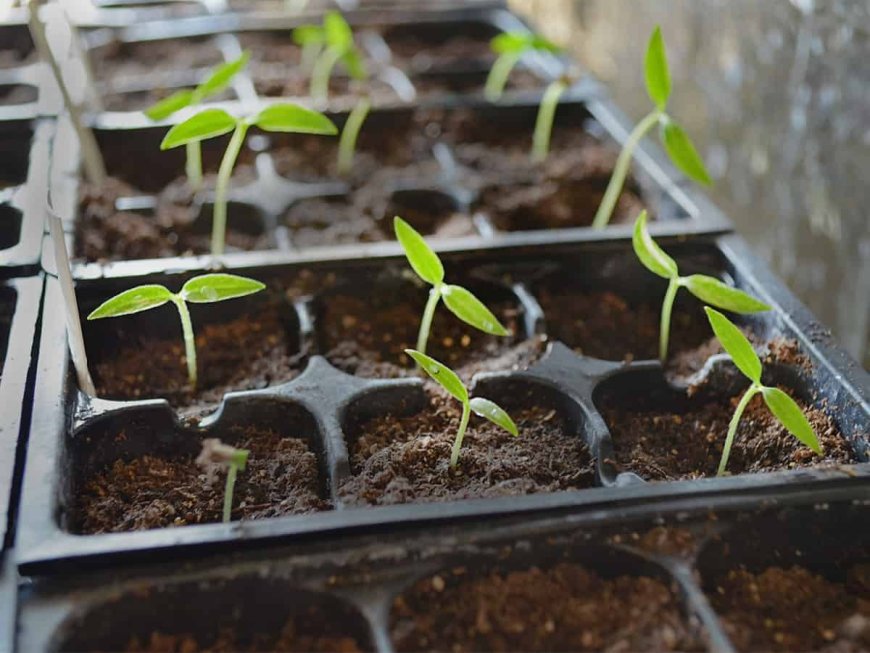How to Grow and Care for Pepper Seedlings: The First Step to a Healthy Harvest

Pepper plants are a staple in many at-home vegetable gardens, offering vibrant colors, various flavors, and the satisfaction of growing your produce. Starting with healthy pepper seedlings is the key to a thriving pepper harvest. This article will walk you through everything you need to know about growing and caring for pepper plants from seedlings, ensuring a successful and bountiful crop.
Why start with pepper sprouts or seedlings?
Growing peppers from seedlings rather than seeds gives you a head-start in the gardening season. Seedlings are already germinated and beginning to grow, saving you time and effort. This approach is especially helpful in regions with shorter growing seasons, as it ensures your peppers have ample time to mature and produce fruit.
How to choose healthy pepper sprouts or seedlings:
Inspect the leaves: Look for bright, vibrant green leaves without discoloration or holes. Avoid seedlings with yellowing or wilting foliage, as these plants are likely not as healthy as you would like or may have been affected by pests.
Check the stem: Choose seedlings with thick, sturdy stems. A strong stem indicates a healthy plant that can withstand transplanting and outdoor conditions once you plant it in your vegetable garden.
Examine the roots: If possible, check them to ensure they are white and fibrous, not brown or mushy. Healthy roots are critical for successful plant growth.
Know your variety: Decide whether you want sweet peppers (like bell peppers) or hot peppers (like jalapeños or habaneros) and select seedlings accordingly. Note the ideal growing conditions for your preferred type and ensure that you can provide the right environment for them.
Planting pepper seedlings:
Choose the right location: Peppers thrive in full sun, so pick a spot that receives at least 6-8 hours of sunlight daily. Ensure the soil is well-draining and nutrient-rich.
Prepare the soil: Amend the soil in your garden bed or container with compost or organic matter to provide the nutrients peppers need to grow strong and productive.
Spacing: Depending on the variety, space your seedlings 12-18 inches apart. Proper spacing allows for good air circulation, reducing the risk of diseases, and also reduces the competition for food and water, which could compromise your plants’ growth.
Water thoroughly: Water the seedlings immediately after planting to help them establish roots in their new environment. Ensure that you are consistent with your watering so that the plants can thrive.
Caring for your seedlings:
Watering: Keep the soil consistently moist but not waterlogged. Peppers prefer evenly moist soil, especially during flowering and fruiting stages. Missing out on watering can hamper their growth and even affect their flavor.
Fertilizing: Feed your seedlings with a balanced fertilizer or one designed specifically for vegetables. Apply the fertilizer according to the product instructions to promote healthy growth and fruit development.
Mulching: Add a layer of mulch around the plants to retain soil moisture, regulate temperature, and reduce weed growth. This will help you to ensure consistent moisture levels to keep the plants healthy as they grow.
Support structures: Use stakes or small cages to support pepper plants as they grow. This prevents branches from breaking under the weight of the fruit.
Common issues and solutions:
Pests: Look for aphids, spider mites, and pepper weevils. Use insecticidal soap or neem oil to manage infestations safely and naturally.
Diseases: Peppers can be prone to fungal diseases like blight or wilt. To prevent these issues, avoid overhead watering and ensure good air circulation.
Sunscald: If your peppers are exposed to excessive sunlight, the fruit may develop white or yellow spots. If needed, provide some shade during the hottest part of the day.
Harvesting your peppers:
Peppers are ready to harvest when they reach their full size and color, which varies by variety. Sweet peppers can be picked green or waited until they turn red for a sweeter flavor when you eat them. It would be best to harvest your hot peppers based on your desired heat level and maturity.
Use a sharp knife or pruning shears to cut peppers from the plant, leaving a small portion of the stem attached to the pepper plant. This will help it remain healthy and continue producing.
What's Your Reaction?

























